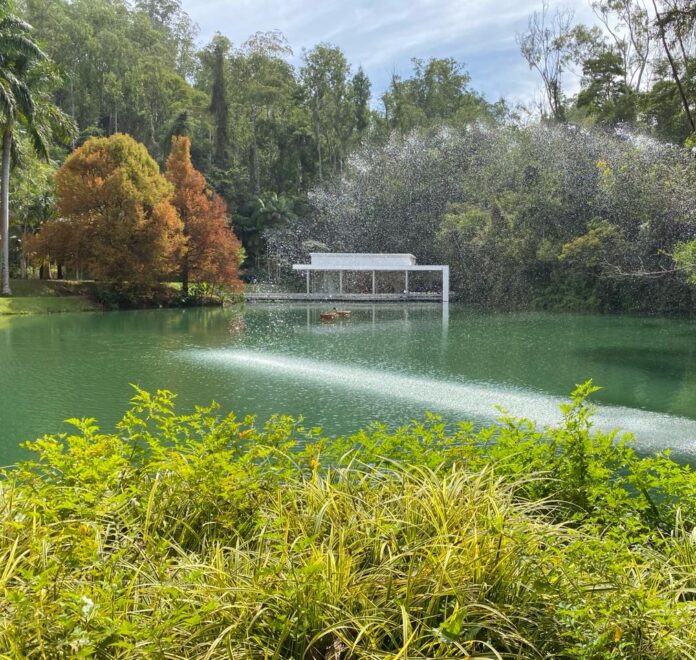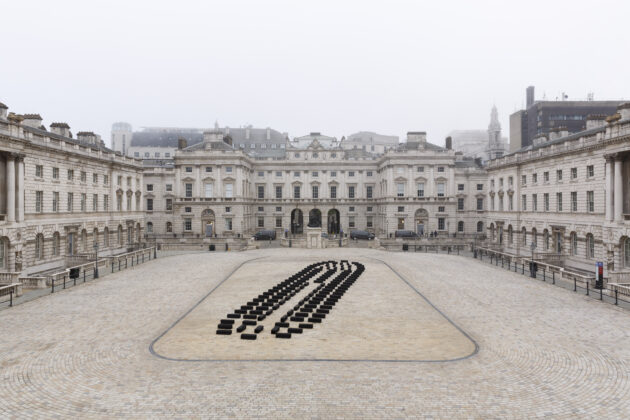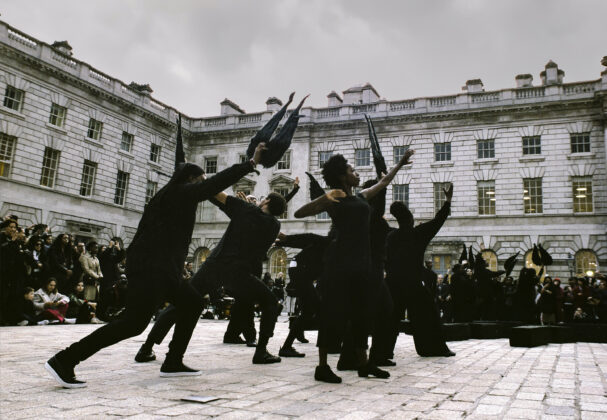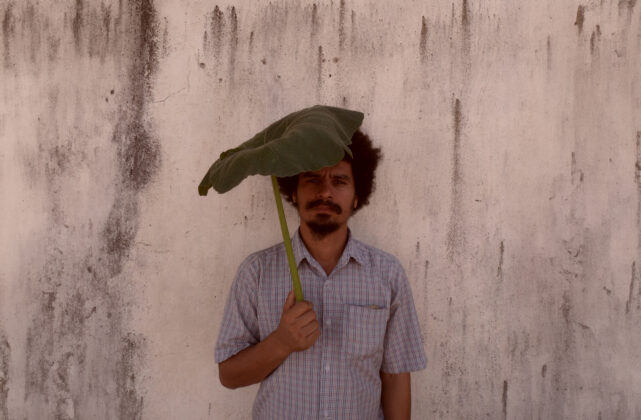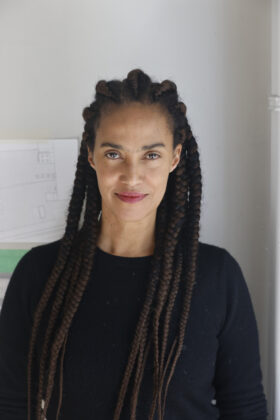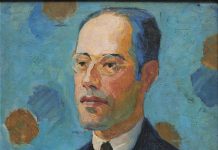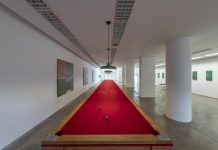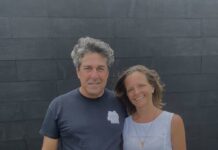Ua resumption of monographic projects, solo exhibitions dedicated to specific works by some artists, as well as unique, immersive works that promote compelling experiences. This is how the artistic director of Inhotim, Júlia Rebouças, describes Inhotim's schedule for 2024, announced last week. The openings will take place over two months (April and October), and the first two are scheduled for 13/4: member of the curatorial collective of the 35th São Paulo Biennial, the Portuguese Grada Kilomba takes the work to Galeria Galpão The boat. On the same day, Paulo Nazareth from Minas Gerais occupies Galeria Praça and other spaces of the open-air museum with works commissioned by the institution.
Exhibited in 2021 at the Museum of Art, Architecture and Technology, in Lisbon, and at Somerset House, in London, The boat is a new work in Brazil, described as a “performance-activated sculptural installation”, in which blocks of charred wood bear verses from a poem written by Grada in six languages (Yoruba, Kimbundu, Creole, Portuguese, English and Arabic).
Júlia Rebouças states that, when presented in the country, the work will gain “a local accent”, and highlights that the work begins now, but its presence at the institute will last for at least two years. “The boat it is accompanied by a set of performances with dance and music, and, throughout the year, we will hold workshops so that artists from the region can participate in the project. The work is taking place here in a way that could only happen in this institutional context in Brazil, in this historical and political moment”.
The creation commissioned by Inhotim from Paulo Nazareth takes its inspiration from Palmital, a housing complex created in 1984, in the city of Santa Luzia (MG), where the artist is based. It brings elements dear to Nazareth, such as history, territory and travel, and will be reflected in several works, such as a banana plantation planted in Inhotim, in works placed on the way to the institution or even propositions by the artist that will come to light throughout the period. expository.
“Paulo Nazareth’s production is based on the idea of transit, displacement, a provocation that we want to bring to the institution. What can we do here that cannot be done in another context?” asks Júlia. “Paulo answered this question exactly with the temporality of a long exposition. We are going to open an exhibition that will change with the seasons. Over the course of two years, in each seasonality, we won't necessarily have a new exhibition of his, but appearances, works that come and go, performances, etc. We’re going to plant bananas and, up front, harvest them, make sweets with them, in short, anything that makes sense to him.”
In the second semester, exhibitions by Rivane Neuenschvander from Minas Gerais, Switzerland's Pipilotti Rist and Rebeca Carapiá from Bahia will take place. With work present in the Inhotim collection, Rivane will take to Galeria Mata an overview of works from different periods, including installations, audiovisual works, paintings and sculptures. In them, she elaborates recurring elements in her production, such as memory and childhood, nature and ecology, history and dictatorship.
Pipilotti will present, at Galeria Fonte, the work Homo sapiens sapiens, filmed in 2004 in the Inhotim gardens, but still unreleased at the institute. Exhibited at the 2005 Venice Biennale, when the artist represented Switzerland, the work brings references to female bodies and baroque iconography, among others. According to Júlia, the installation, which will be shown in an immersive way, tells a little about Inhotim's collection and its commissions, since the work was carried out at the institute and returns now, 20 years later.
“It is an example of Pipilotti's work with video art which, from that moment on, between 2004 and 2005, presents a set of new features in the way of exposing and dealing with images. The first time she designed it was on the ceiling of a church, dealing with its ornaments, with a thesis about the origin of the world”, explains Júlia. “It is a work with great imagery appeal, through a kaleidoscopic effect, in which it also portrays a set of female bodies in an absolutely intrinsic relationship with nature”.
Júlia Rebouças highlights that the 2024 program mixes balances (like the work of Pipilotti), a mutant character (in Paulo Nazareth), another monographic (with Rivane) and a work that makes use of Inhotim's resources, such as the commission made to the artist Bahian Rebeca Carapiá, for the institute's external area.
“We have a technical team, from workshops, from ateliers, who are incredible and absolutely experienced and who, throughout these 17 years at the institution, have been working directly with the artists. So we invited Rebeca to also think a little about this artist who can benefit from this context and this infrastructure to experiment, in a conceptual, formal and technical way, in dialogue with the space, with a very close conversation and support that is not just auxiliary, but also constitutive”, he says.

Inhotim's 2024 artistic program also includes its first International Music Festival – which foresees musical experiences immersed in the institute's artistic and natural environments, in July – and, in the previous month, during Environment Week, the project Transmute: International Seminar, in which the presence of Brigitte Baptiste stands out, a Colombian biologist who focuses on the intersectionality between biodiversity and queer theory.
“She comes to do a performance, a speech and an activation and is part of a group of guests, including Ailton Krenak, to experiment with other ways of carrying out public programs, involving artistic and botanical collections”, explains the director artistic.
For Julia, the set of actions planned for this would be exemplary of a new moment for the institute, which has another strong point in the creation of the education board, under the command of Gleyce Heitor, an “important turning point within the institution”, which will reinforce the tripod art , nature and education, “dealing with issues of territory, contemporary times, in the multiple possible manifestations at the intersection between these three”, he concludes.
Júlia, who had her first stint at Inhotim between 2007 and 2015, and returned to the institute last year, also highlights that ane of the emblematic initiatives of the changes starting at the museum around 2022 would be the project around Abdias do Nascimento, carried out in partnership with the IPEAFRO (Institute for Afro-Brazilian Research and Studies).
She highlights that it was a program coming from a borrowed collection, in which Inhotim also housed “a whole set of concepts and practices from that great and fundamental intellectual that was Abdias Nascimento”. These practices, she states, led the institute to “reposition itself in relation to the collection, artistic and curatorial program, work practices and involvement with the community”.
For Júlia, the experience was due to the maturation of “this living organism that is an institution like Inhotim”, which allowed another way of exhibiting, not only through commissioning or direct collecting, “but also through a partnership between institutions , which in turn reverberated in an authorial program and in other artists, other exhibitions over the years, which were not only obviously dedicated to Abdias, but which were there, in the midst of this thought, which allows these other ways of doing”, he concludes .

